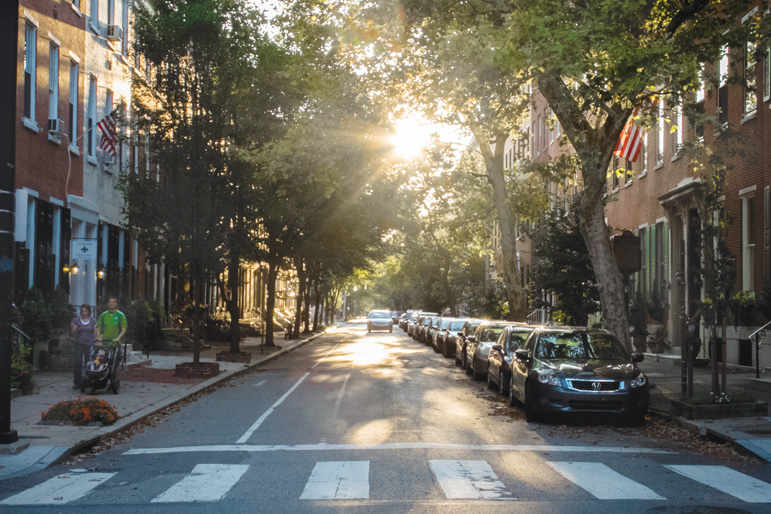
I remember, as a child, visiting friends who had moved from our old leafy neighborhood in Northwest Philadelphia to new homes in the Northeast. I was shocked by the glare of the summer sun on the bare streets and sidewalks.
These new homes sure were nice, but they were developed on farmland and had no mature trees, and the neighborhood’s treeless environment was inhospitable to people under the baking summer sun. You could fry an egg on the blacktop and you needed sunglasses just to walk around. Awning installation companies flourished as home owners felt the need to have shady entries. Public pools were popular for families to cool off. It would take 30 to 40 years for the new trees to grow a significant shady tree canopy that would make the neighborhood comfortable during the hot Philadelphia summers.
Large-diameter shade trees in our communities provide more than just shade. Their leaf surface area and transpiration rates cool the air temperatures and help reduce the effects of the urban heat island, as well as reducing heating and cooling costs.
Their leafy canopies intercept the rainfall and reduce storm water runoff. Rainfall is better able to penetrate the soil and percolate into the ground water. As trees grow, they accumulate biomass by sequestering the carbon from the atmosphere and storing it as wood. Trees are carbon sinks; they help reduce global warming. A study at UPenn found that six large-diameter London plane trees (greater than 30" diameter breast height [DBH]) stored 14,291 pounds of carbon and sequestered 470 pounds of carbon annually. It would take approximately 1,300 small-diameter trees to perform the same function. (Source: Bassett,
Corrine G. 2015. The Environmental Benefits of Trees on an Urban University Campus) Of course, those 1,300 young trees will continue to grow and provide significant ecological benefits as their canopies spread and mature.
Aesthetically, mature trees provide a sense of an established community nestled under the cantilevered limbs of the large shade trees. And the trees’ seasonal expressions of spring-summer-fall-winter phenology provide context to our lives and connect us to nature. Animals, birds, and insects use the trees as habitat and food source. Shade trees integrate our communities into the bordering natural environments. Life at 80 feet above the ground is active and vibrant. Large-canopy trees make a significant difference in creating a more pleasant, livable environment in our communities.
We encourage you to plant trees that will grow large and provide canopy cover, and so much more, for future generations.

When heavy winds blow, major limbs — and sometimes entire trees — fall. The primary reason for this is poor structure, which results...

In the past 10 years, several significant pest and disease issues have become so common that we deal with them every day. Here...

Beech Leaf Disease (BLD) is emerging as the biggest threat to our trees since Emerald Ash Borer.
As we have communicated over the past...